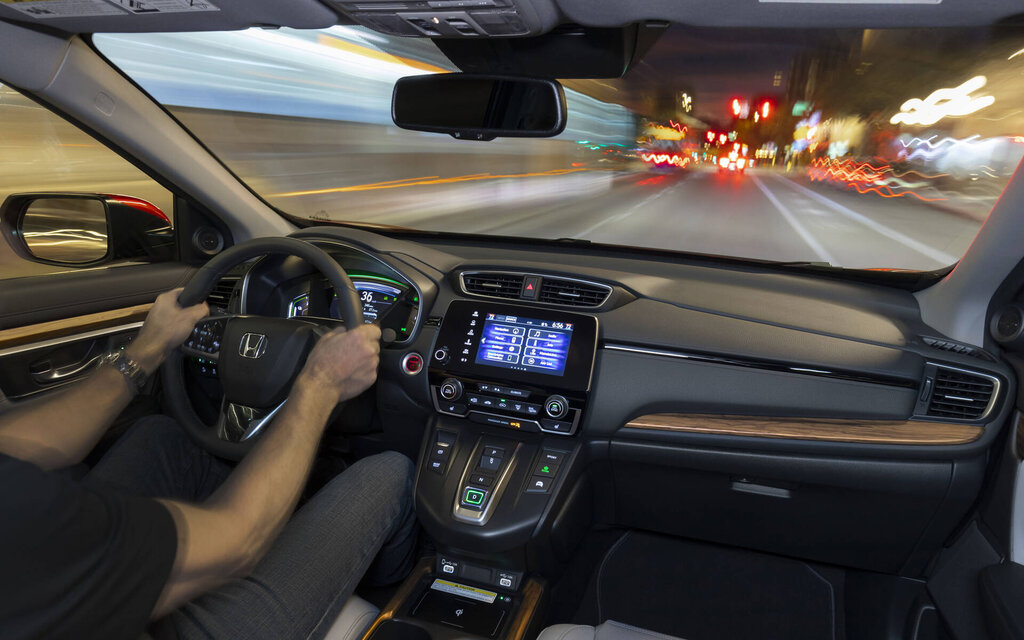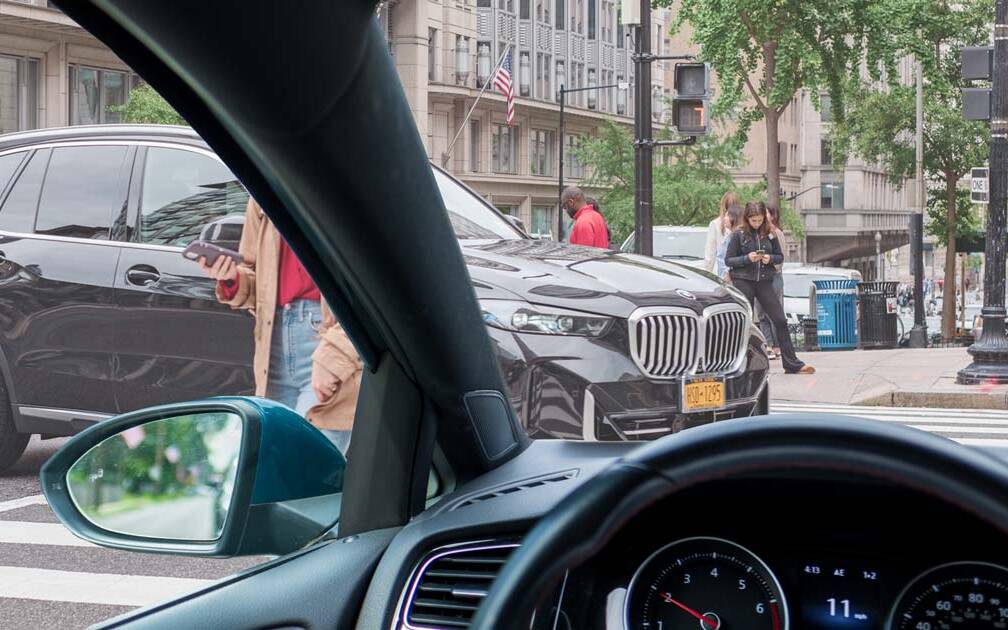Forward Blind Spots Keep Growing, and That's a Big Problem
A study led by researchers from the U.S. Department of Transportation’s Volpe Center reveals that forward blind zones of six top-selling passenger vehicles grew substantially from 1997 to 2003, likely another explanation for the significant rise in pedestrian and cyclist fatalities.
The results are based on a new method developed by the Insurance Institute for Highway Safety (IIHS), which relies on computational software and a portable camera rig that can be positioned in the driver seat at various heights to represent different-sized drivers. The camera rotates to take a 360-degree image of the field of vision around the vehicle. The software then converts that image into a blind zone map that depicts an aerial view of the vehicle and the nearest points on the ground that the driver can see.
- Also: IIHS Announces Preliminary Top Safety Pick Award Winners for 2025
- Also: Just One Out of Three Large SUVs Performed Well in New IIHS Collision Tests
The study focused on forward visibility within a 10-metre radius of the vehicle because that is the average driver stopping distance at 10 mph (16 km/h), a low speed at which blind zones are a common factor in crashes, the IIHS pointed out.
SUVs Are a Problem
The largest reduction in forward visibility came for the Honda CR-V, as the vehicle’s hood, mirrors and A-pillars all obstructed a greater portion of the driver’s view over time. As researchers found, drivers of the 1997 model were able to see 68% of the area 10 metres in front of the vehicle, while drivers of the 2022 model can see only 28%.

When it comes to the Chevrolet Suburban, drivers of the 2000 model (the earliest model of that vehicle studied) were able to see 56% of the area 10 metres in front of them, while drivers of the 2023 model can see only 28%.
For both of these vehicles, the IIHS noted, the biggest changes in the blind zone are due to a higher hood that blocks more of the frontal plane and larger side mirrors that obscure the views at their front corners.

Here’s how other vehicles have reduced their forward visibility over the years:
- Ford F-150: 43% in 1997 to 36% in 2015;
- Honda Accord: 65% in 2003 to 60% in 2023;
- Toyota Camry: 61% in 2007 to 57% in 2023.
“These results are notable because we already know that the portion of SUVs in the U.S. fleet grew substantially over these years as well,” said IIHS Senior Research Engineer Becky Mueller, who led the development of the new mapping technique and is a co-author of the Volpe Center study. “If further research confirms that these changes reflect a general change, that would suggest that declining visibility in SUVs has compounded the effects of taller, blunt-nosed vehicles that IIHS has already documented.”
Recent IIHS studies have indeed shown that the height of a vehicle’s front end amplifies the effect of higher crash speeds on fatality risk, and that vehicles with blunt front ends are more deadly than those with sloping profiles. However, the role that changes in driver visibility have played in the increase must still be explored further.












